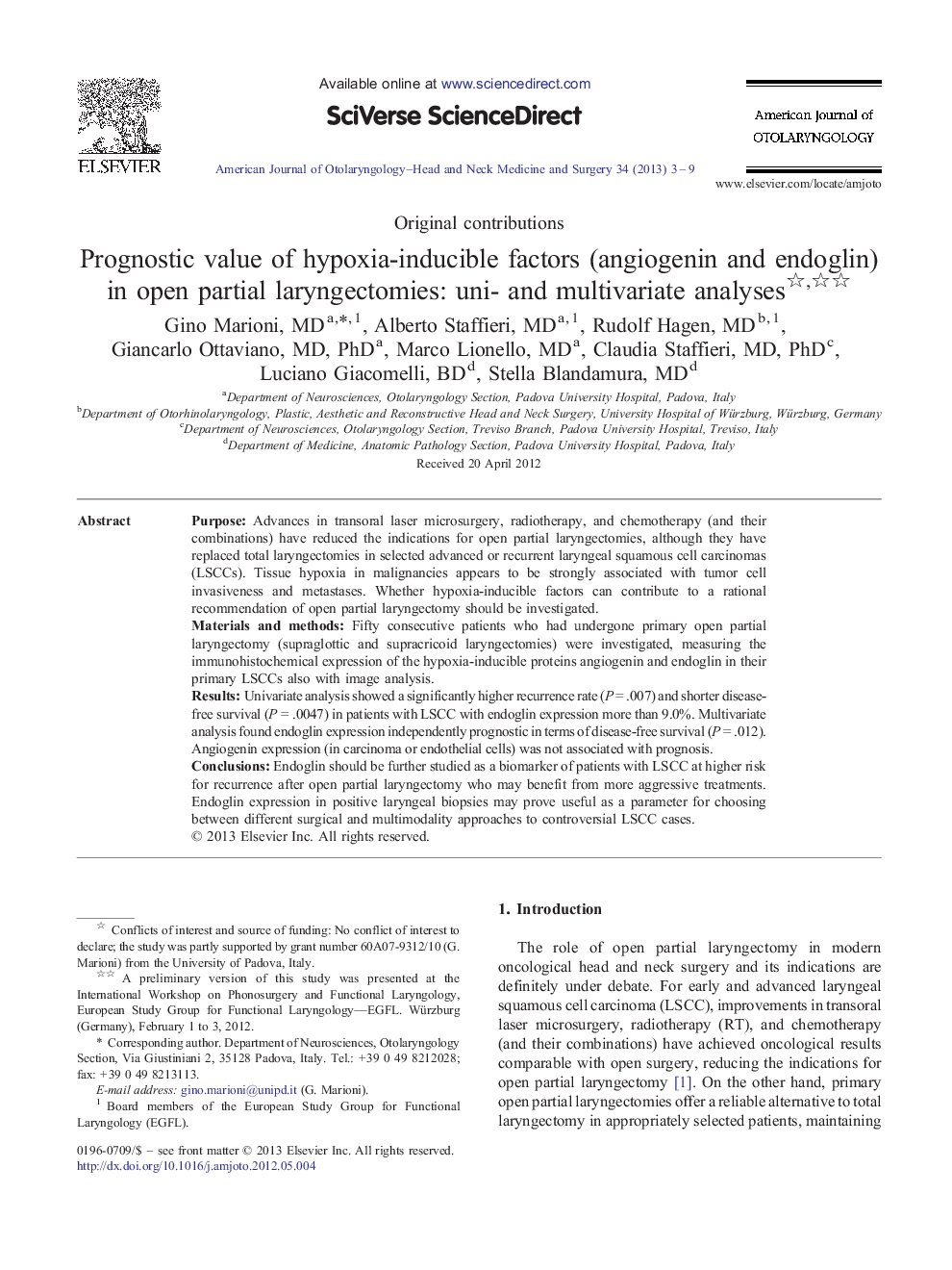| Article ID | Journal | Published Year | Pages | File Type |
|---|---|---|---|---|
| 4103906 | American Journal of Otolaryngology | 2013 | 7 Pages |
PurposeAdvances in transoral laser microsurgery, radiotherapy, and chemotherapy (and their combinations) have reduced the indications for open partial laryngectomies, although they have replaced total laryngectomies in selected advanced or recurrent laryngeal squamous cell carcinomas (LSCCs). Tissue hypoxia in malignancies appears to be strongly associated with tumor cell invasiveness and metastases. Whether hypoxia-inducible factors can contribute to a rational recommendation of open partial laryngectomy should be investigated.Materials and methodsFifty consecutive patients who had undergone primary open partial laryngectomy (supraglottic and supracricoid laryngectomies) were investigated, measuring the immunohistochemical expression of the hypoxia-inducible proteins angiogenin and endoglin in their primary LSCCs also with image analysis.ResultsUnivariate analysis showed a significantly higher recurrence rate (P = .007) and shorter disease-free survival (P = .0047) in patients with LSCC with endoglin expression more than 9.0%. Multivariate analysis found endoglin expression independently prognostic in terms of disease-free survival (P = .012). Angiogenin expression (in carcinoma or endothelial cells) was not associated with prognosis.ConclusionsEndoglin should be further studied as a biomarker of patients with LSCC at higher risk for recurrence after open partial laryngectomy who may benefit from more aggressive treatments. Endoglin expression in positive laryngeal biopsies may prove useful as a parameter for choosing between different surgical and multimodality approaches to controversial LSCC cases.
